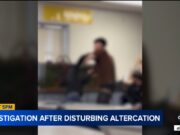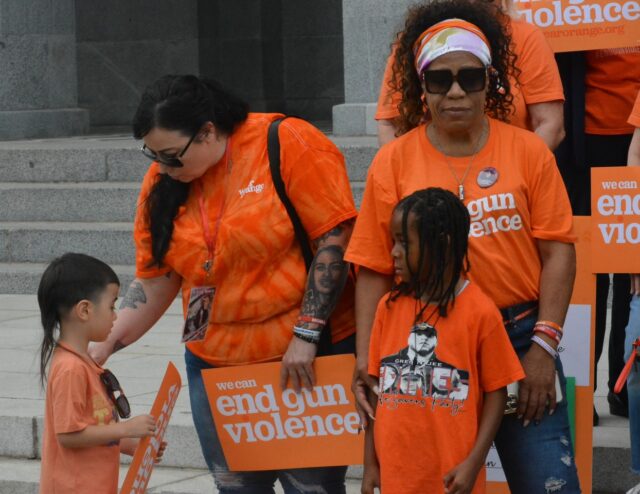By Antonio Ray Harvey | California Black Media
On August 8, in a Sacramento County courtroom, Tajee Michael was sentenced to 25 years to life in prison for the shooting death of high school football coach Greg Najee Grimes.
The shooting occurred outside a Sacramento nightclub on July 4, 2022. Michael was arrested in February 2024 in North Carolina with the help of “America’s Most Wanted” and the United States Marshals Service (USMS).
Michael agreed to the plea deal in the presence of Grimes’ parents, Deborah and Gregory Grimes. In the shooting, Michael — who had prior felony convictions in 2021 and 2022 — used a semiautomatic weapon to kill Grimes and wound four others.
The Grimes family told California Black Media (CBM) that the 30-year-old Michael first presented the deal to the family and accepted full responsibility for the murder.
“I had always said that a trial would outlive me because it was so emotional for me,” Deborah Grimes said. “The fact that we were able to avoid a trial meant so much to me. He was so remorseful. He had an epiphany. I didn’t have to worry about being retraumatized.”
The Grimes’ family created the Greg Najee Grimes 212 Anchor Foundation in honor of the Boise State University graduate. The foundation provides scholarships and raises awareness about gun violence to reduce the number of deaths and injuries caused by firearms.
Although California already has some of the nation’s toughest gun laws — including background checks, waiting periods, and bans on certain firearms — the state is pursuing new measures to prevent tragedies like Grimes’ killing.
The Gavin Newsom administration recently launched “Reduce the Risk,” a public awareness campaign run through the California Governor’s Office of Emergency Services (Cal OES). The effort spotlights gun violence, protection orders and other legal tools used by the criminal justice system to help reduce the state’s firearm death rate.
On July 30, American Community Media hosted a media briefing where Cal OES and the Department of Justice (DOJ) explained how raising public awareness of these laws can enhance safety and save lives, particularly in communities hardest hit by gun violence.
“One of our top priorities has been to support better understanding and implementation of court protection and restraining order processes that allow people concerned about another person’s safety, or their own safety,” said Ari Freilich, Director of the California Office of Gun Violence Prevention at the DOJ.
A recent statewide poll found that 80% of Californians know little or nothing about gun violence protection orders (GVPOs).
From 2019 to 2021, the DOJ reported an 80% increase in domestic violence-related calls in California involving the reported or threatened use of firearms.Between 2016 and 2021, 92% of fatal and nonfatal gunshot wounds were “intentional self-harm, the report stated.
Since 2016, protection orders have prevented 58 potential mass shooting threats in the state, and a variety of other types of violence, including self-harm, by giving people time to pause, get help, and heal.
“Last year, we published a report called ‘Pathways to Safety,’ which is a guide to California’s array of nine different court protection and restraining order processes,” Freilich said. “All nine of these processes empower Californians to present evidence to a judge showing that they need court-ordered safety protections for themselves — or for other people who may be in danger.”
Published in 14 different languages, the guide provides information on protective and restraining orders related to intimate partner violence; post-separation abuse; elder and dependent adult abuse; harassment prevention orders, and more.
“These are laws that provide protections to people who have been harassed or threatened, and the nine protection orders offer various types of safety features,” Freilich said. “The one thing that they all have in common is that the person who is being served must relinquish their firearms and cannot possess firearms while the order is in place.”
The briefing also featured other advocates and organizations that represent various perspectives and contribute to the statewide discussion about reducing gun violence.
Those participants included Dr. Amy Barnhorst, Associate Director at the Centers for Violence Prevention and Professor of Psychiatry at the UC Davis School of Medicine; Sgt. Kyle Ikeuchi, Sacramento County Sheriff’s Office; Chris Dargan, Senior Public Information Officer for Cal OES, and Gabriella Gonzales, a member of the Reduce the Risk Youth Advisory Council.
In California, Black people experience disproportionately high rates of gun violence deaths compared to other racial groups, Freilich said. Nearly 3,000 Californians die from gun violence each year, an average of eight people every day.
“About half of people who are victims of gun assault in our state are Black, (and) about a third are Hispanic or Latino,” Freilich said. “So, (gun violence) disproportionate impacts communities of color.”
Deborah Grimes has been actively involved in advocating for safety measures through the Najee’s Law Initiative, which proposes requiring downtown Sacramento establishments to have exterior cameras and lighting, mandatory metal detectors at bars and nightclubs, and holding establishments accountable for violent incidents on their premises.
Grimes is a member of Moms Demand Action for Gun Sense in America, a non-partisan grassroots movement that advocates for stronger gun laws and policies to reduce gun violence. Along with Students Demand Action, Moms Demand Action regularly pushes for gun violence prevention at the California State Capitol.
Grimes is also part of a nine-family group. Each family has lost a male relative to gun violence in Sacramento alone. Her son’s killing is the only one that has been solved.
“We call it gun violence interruption. When I say the work is mission critical…that’s really what I mean,” she told CBM. “Some people typically like to just look at their situation and their family. We have learned to learn to look beyond our own microcosm. We look at things on a macro level, not only locally or statewide, but nationally. We’re trying to save lives.”

































